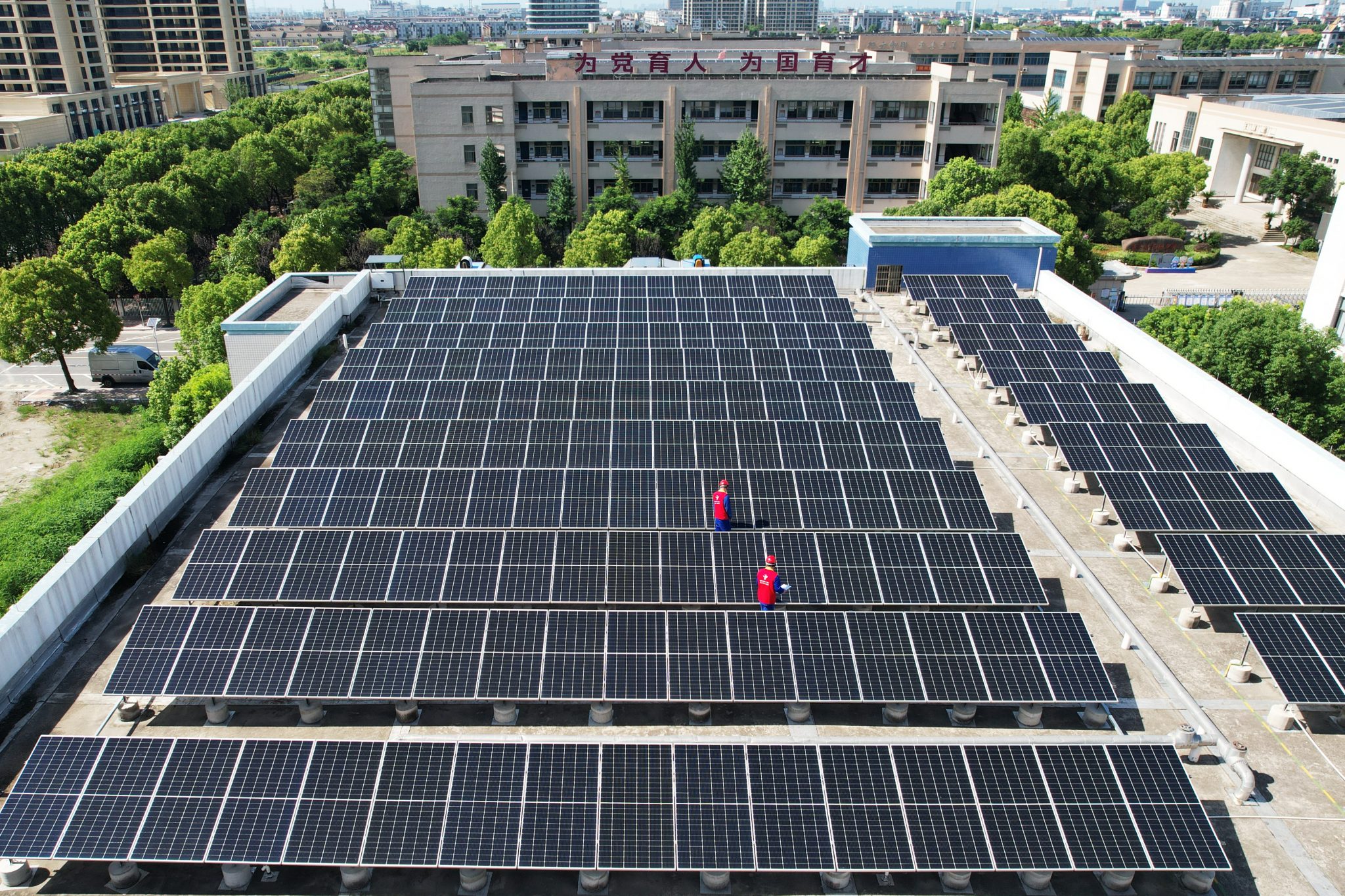China
Singapore and China join forces with new green finance taskforce

Abstract
Sustainable finance is gaining attention from investors and policymakers worldwide. While Europe has been at the forefront of regulating sustainable finance, East Asia is quickly catching up due to recent government initiatives and regulations. Countries like Singapore and China have embraced sustainable finance regulations, guiding their financial sectors towards eco-friendly and socially responsible ventures. Collaboration between Singapore and China has been elevated through the China-Singapore Green Finance Taskforce, aimed at strengthening cooperation in green and transition finance. The taskforce includes expert members from commercial banks, sovereign wealth funds, and regional banks, working together to boost investment in green technology and streamline sustainable financial instruments. This collaboration is expected to invigorate the sustainable finance market in the region.
Author: Stefanie Schacherer, Singapore Management University
Sustainable finance garners significant attention from global investors and policymakers. In recent years, Europe has led the way in regulating sustainable finance. But East Asia is catching up as sustainable investment surges due to recent government initiatives and regulations.
The regulatory landscape is pivotal, providing clarity for markets to flourish. Countries like Singapore and China have embraced new sustainable finance regulations, guiding the financial sector toward eco-friendly and socially responsible ventures. Fourteen Asian states and ASEAN have developed or are in the process of developing green taxonomies. China established its Green Bond Catalogue in 2015, while Singapore is currently finalising its forthcoming green taxonomy.
Building upon their sustainable finance policies and regulations, Singapore and China have elevated their collaborative efforts. In April 2023, the Monetary Authority of Singapore and the People’s Bank of China unveiled the China–Singapore Green Finance Taskforce — a seminal stride aimed at amplifying bilateral cooperation in green and transition finance across Singapore, China and East Asia. Comprising a public–private consortium of expert members including commercial banks, such as Singapore-based DBS, sovereign wealth funds and Chinese regional banks, the taskforce functions as a conduit for the exchange of best practices and knowledge.
This initiative aims to boost investment in green technology and promote decarbonisation by streamlining the issuance of sustainable financial instruments. The Singapore Exchange and China International Capital Corporation will jointly establish a workstream with the goal of fortifying connectivity within the sustainability bond market between the two nations. This endeavour encompasses the mutual issuance of — and access to — green and transition bond products across China and Singapore.
Collaborative efforts between the Metaverse Green Exchange and China Beijing Green Exchange are also integral to this facilitation. Their cooperative workstream will harness technology to expedite the adoption of sustainable finance, including piloting digital green bonds accompanied by carbon credits.
The hybrid and expert-based character of the taskforce should facilitate greater public–private sector collaboration in China and Singapore on concrete products and instruments. This will catalyse capital flows to support a credible and inclusive transition to low-carbon business activities.
Investing in sustainable finance products offers substantial long-term benefits. It provides investors with an opportunity to invest in infrastructure while also meeting their climate commitments. It also reduces any regulatory risks associated with investments that are not aligned with the transition. Facilitating the issuance of green bonds for sustainable projects and bolstering financing mechanisms are poised to invigorate the sustainable finance market in the region.
The taskforce will also collaborate on Singapore’s green…
Business
Gordonstoun Severs Connections with Business Led by Individual Accused of Espionage for China

Gordonstoun school severed ties with Hampton Group over espionage allegations against chairman Yang Tengbo. He denies involvement and claims to be a victim of political tensions between the UK and China.
Allegations Lead to School’s Decision
Gordonstoun School in Moray has cut ties with Hampton Group International after serious allegations surfaced regarding its chairman, Yang Tengbo, who is accused of being a spy for the Chinese government. Known by the alias "H6," Mr. Tengbo was involved in a deal that aimed to establish five new schools in China affiliated with Gordonstoun. However, the recent allegations compelled the school to terminate their agreement.
Public Denial and Legal Action
In response to the spying claims, Mr. Tengbo publicly revealed his identity, asserting that he has committed no wrongdoing. A close associate of Prince Andrew and a former Gordonstoun student himself, Mr. Tengbo has strenuously denied the accusations, stating that he is a target of the escalating tensions between the UK and China. He has claimed that his mistreatment is politically motivated.
Immigration Challenges and Legal Responses
Yang Tengbo, also known as Chris Yang, has faced additional challenges regarding his immigration status in the UK. After losing an appeal against a ban enacted last year, he reiterated his innocence, condemning media speculation while emphasizing his commitment to clear his name. Gordonstoun, on its part, stated its inability to divulge further details due to legal constraints.
Source : Gordonstoun cuts ties with business chaired by man accused of spying for China
Business
China Dismantles Prominent Uyghur Business Landmark in Xinjiang – Shia Waves

The Chinese government demolished the Rebiya Kadeer Trade Center in Xinjiang, affecting Uyghur culture and commerce, prompting criticism from activists amid concerns over cultural erasure and human rights violations.
Demolition of a Cultural Landmark
The Chinese government recently demolished the Rebiya Kadeer Trade Center in Urumqi, Xinjiang, a vital hub for Uyghur culture and commerce, as reported by VOA. This center, once inhabited by more than 800 predominantly Uyghur-owned businesses, has been deserted since 2009. Authorities forcibly ordered local business owners to vacate the premises before proceeding with the demolition, which took place without any public notice.
Condemnation from Activists
Uyghur rights activists have condemned this demolition, perceiving it as part of China’s broader strategy to undermine Uyghur identity and heritage. The event has sparked heightened international concern regarding China’s policies in Xinjiang, which have been characterized by allegations of mass detentions and cultural suppression, prompting claims of crimes against humanity.
Rebiya Kadeer’s Response
Rebiya Kadeer, the center’s namesake and a notable Uyghur rights advocate, criticized the demolition as a deliberate attempt to erase her legacy. Kadeer, who has been living in exile in the U.S. since her release from imprisonment in 2005, continues to advocate for Uyghur rights. She has expressed that her family members have suffered persecution due to her activism, while the Chinese government has yet to comment on the legal ramifications of the demolition.
Source : China Demolishes Uyghur Business Landmark in Xinjiang – Shia Waves
China
China Expands Nationwide Private Pension Scheme After Two-Year Pilot Program

China’s private pension scheme, previously piloted in 36 cities, will roll out nationwide on December 15, 2024, enabling workers to open tax-deferred accounts. The initiative aims to enhance retirement savings, address aging population challenges, and stimulate financial sector growth.
After a two-year pilot program, China has officially expanded its private pension scheme nationwide. Starting December 15, 2024, workers covered by urban employee basic pension insurance or urban-rural resident basic pension insurance across the country can participate in this supplementary pension scheme. This nationwide rollout represents a significant milestone in China’s efforts to build a comprehensive pension system, addressing the challenges of a rapidly aging population.
On December 12, 2024, the Ministry of Human Resources and Social Security, together with four other departments including the Ministry of Finance, the State Taxation Administration, the Financial Regulatory Administration, and the China Securities Regulatory Commission, announced the nationwide implementation of China’s private pension scheme effective December 15, 2024. The initiative extends eligibility to all workers enrolled in urban employee basic pension insurance or urban-rural resident basic pension insurance.
A notable development is the expansion of tax incentives for private pensions, previously limited to pilot cities, to a national scale. Participants can now enjoy these benefits across China, with government agencies collaborating to ensure seamless implementation and to encourage broad participation through these enhanced incentives.
China first introduced its private pension scheme in November 2022 as a pilot program covering 36 cities and regions, including major hubs like Beijing, Shanghai, Guangzhou, Xi’an, and Chengdu. Under the program, individuals were allowed to open tax-deferred private pension accounts, contributing up to RMB 12,000 (approximately $1,654) annually to invest in a range of retirement products such as bank deposits, mutual funds, commercial pension insurance, and wealth management products.
Read more about China’s private pension pilot program launched two years ago: China Officially Launches New Private Pension Scheme – Who Can Take Part?
The nationwide implementation underscores the Chinese government’s commitment to addressing demographic challenges and promoting economic resilience. By providing tax advantages and expanding access, the scheme aims to incentivize long-term savings and foster greater participation in personal retirement planning.
The reform is expected to catalyze growth in China’s financial and insurance sectors while offering individuals a reliable mechanism to enhance their retirement security.
| This article was first published by China Briefing , which is produced by Dezan Shira & Associates. The firm assists foreign investors throughout Asia from offices across the world, including in in China, Hong Kong, Vietnam, Singapore, and India . Readers may write to info@dezshira.com for more support. |
Read the rest of the original article.






